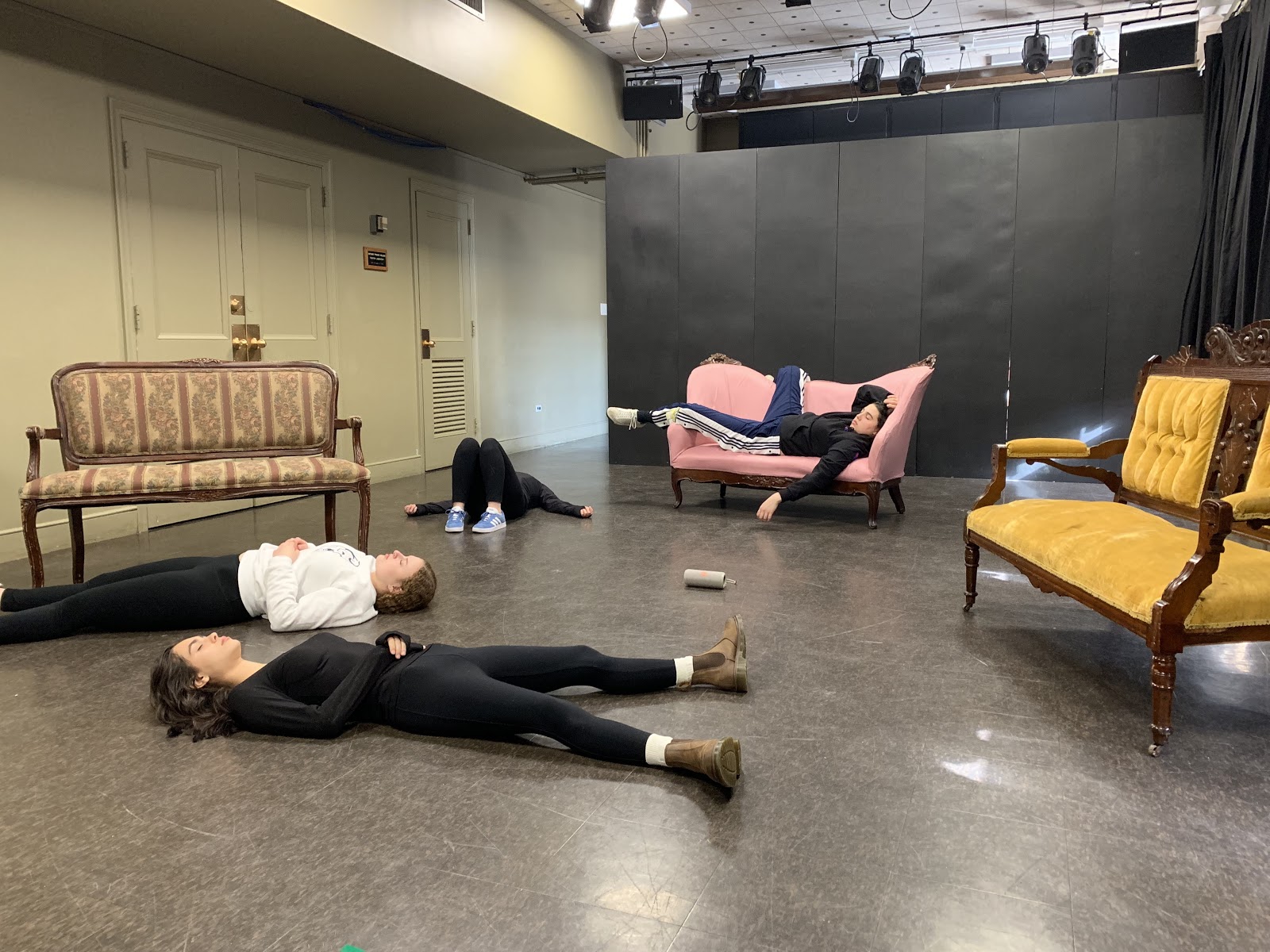
After getting back to campus from winter break, there was one major thing on my to-do list: hold auditions. The thought of auditions didn’t stir up any anxiety, but the thought of having to select a cast from a group of amazingly talented students did. For about three hours, my team and I scribbled notes on random pieces of paper as students traipsed in and out of the room with their monologues. Halfway through the evening, I got the same feeling I get during a class when I’m the only student not taking notes. I realized I was writing without a clue about what I was supposed to be writing down. I was just scribbling because that’s what I’m supposed to do, right?
Once the last person finished their audition, it was time to assemble the cast, which is the worst part of the process for someone like me who wants to give everyone a chance. Luckily, I had my stage manager, Morgan, and assistant director, Declan, to help me think. And, in a matter of painstaking minutes, the cast was set.
This period between releasing the cast list and our first rehearsal was almost as anxiety-provoking as being unprepared for a test. I am accustomed to coming to rehearsal as an actor or sound designer, ready to listen, learn and work. This time around, I was coming as a director. What should I be ready to do? How do I begin rehearsal? How will an entire (existentialist) show come together in three weeks? I had major qualms about my task as a director because I didn’t want to fail my team or prevent the cast from learning and growing as performers.
Then, I thought back to the shows I’ve done at Conn. I put myself back into the rehearsal rooms, stretching or stumbling through a go-to theater warm up, “The big black bug bit the big black bear and the big black bear bled blue-black blood.” All of these memories brought back feelings of comfort and joy from doing what I loved. This time, the only new thing was my role in the room. I was still doing what I love, creating. Pulling from those experiences squashed my doubts because I realized all I had to do was create. Create a comfortable environment where every person felt brave and supported. Create exercises and warm ups that would communicate a point to the performers. Create a way for the performers to understand what they’re doing and saying. The rest would come via my own experiences.
We rehearsed five times per week over the next three weeks. Costumes were pieced together. Lighting was added. Sounds drifted through speakers, and the show began to look like what I had dreamed it to look like—a beautiful creation.